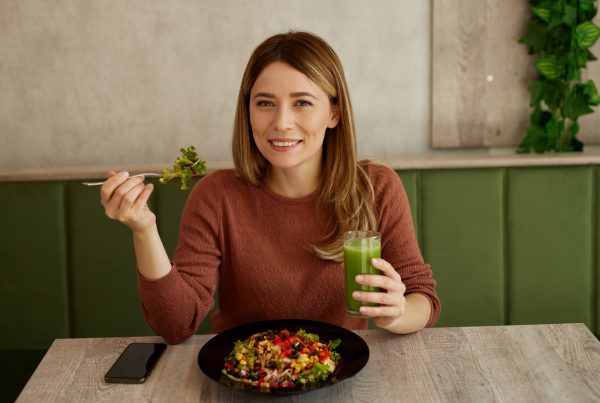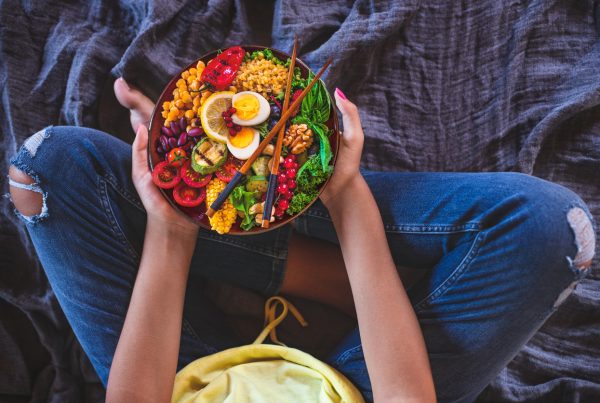Dr Linia Patel explains how to keep your hydration up in the warmer weather.
The average adult body is more water than anything else (about 60%), with your muscles and brain being about 70-80% water. Brain cells need a delicate balance between water and various nutrients to operate and, when the balance is disrupted, your brain cells lose efficiency.
It’s therefore not surprising that, when you don’t have enough water on board, your brain is not able to function optimally. Not only is your concentration affected, but dehydration may also be the cause of your 4pm slump, general fatigue and even constipation.
So, it’s important to drink plenty of fluids to help you stay well hydrated. However, it’s not only drinks that can help you top up your fluid levels. Lots of vegetables and fruits are also great sources of water. In fact, around one fifth of your daily fluid intake comes from the foods you eat. Here are some water-rich vegetables to consider including in your diet:
- Cucumber, 96% water. Cucumbers are made up of around 96% water – that’s the highest water content of any food. Due to their high-water content, they are low in calories and a great snack (dipped in some hummus). For a refreshing drink, why not blend cucumber, mint and lime.
- Tomatoes, 95% water. The cornerstone of the Mediterranean diet, tomatoes of all varieties contain about 95% water. They are also a rich source of vitamin A and antioxidants called lycopenes. Add tomatoes to your scrambled eggs, sandwiches and salads. Snack on the small, sweet cherry tomatoes or try making a gazpacho soup (recipe below).
- Radishes, 95% water. In folk medicine, the radish is considered a cooling food as it is known for its heat-dissipating properties. Radishes comprise 95% water, almost as much as an iceberg lettuce. Radishes are a tasty, water-based food you can snack on to help boost your fluid intake. You can also add them to salads. For an added fibre boost, keep the skin on!
- Spinach, 93% water. It’s not only a good plant source of iron but a great food to boost your hydration. Use spinach as the base of a fresh summer salad or add a handful to your smoothies. You can also freeze it in ice cube trays ready to add to soups, casseroles or pasta dishes.
- Mushrooms, 92% water. If you have tried cooking mushrooms, you will know they are made up of a lot of water. They are also a good source of vitamin B2, a nutrient that helps reduce tiredness and releases energy from the food you eat. Have you tried adding sliced mushrooms to your salads? You can also add them to pretty much anything you eat: eggs, bolognaise, soups, stews and casseroles. Try filling up two large portobello mushrooms with chopped tomatoes, some herbs and some grated cheese and then cook them in the oven as a tasty side dish.
Easy gazpacho
When it’s too hot to cook, this is one of my favourite summer recipes. Fresh, fast, delicious, nutritious and hydrating. Use as a starter or, if having it as a main, have some crusty wholegrain bread and a boiled egg on the side.
Ingredients (Serves 4)
2lb Roma tomatoes, cored and roughly chopped
1 red pepper, seeded and roughly chopped
1 small green pepper, seeded and roughly chopped
1 medium cucumber, roughly chopped
1 small red onion, roughly chopped
1/3 cup olive oil
2 tbsp red wine vinegar
Method
- Put the chopped tomatoes, peppers, cucumber, red onion and garlic into a large food processor or blender.
- Blend until smooth (about 2mins), scraping down the sides as needed with a spatula.
- Drizzle in red wine vinegar and olive oil and continue blending until smooth.
- Season with salt and pepper as desired. Place in fridge and cool before serving.
Further reading
- Popkin B et al (2010), Water, hydration and health, Nutr Rev., 68(8): 439-58.
Why not check out Linia’s online education course, ‘Nutrition in Menopause’ for both fitness professionals and also those going through their own menopause journey?
Author Bio:

Dr Linia Patel has a BSc degree in biochemistry and physiology and has recently achieved a PhD in public health. Linia is a leading dietitian and sports nutritionist. Her passion is translating nutritional science into easy-to-digest and practical advice.








